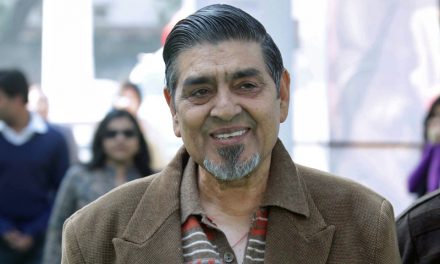The Genocide of Sikhs in India in November 1984 was centred on Delhi, then spread across the length and breadth of the country, as well as having the desired impact on Sikhs abroad who had never stepped foot in the Punjab. Tens of thousands were annihilated in quite gruesome ways, sometimes in front of watching family members who were scarred for life – physically and mentally – whilst large numbers in western nations watched on anxiously, concerned for friends and relatives in the days, weeks and months that followed. There is no question that the ruling Government of India was responsible and that they should be held accountable. But in the three decades that have passed, little has been done to acknowledge what took place, bring those directly cuplable to justice, or to even redefine what remain officially depicted as ‘riots’. But the resulting sense of helplessness amongst Sikhs as a collective has festered so much that today it is arguably in danger of causing more damage than the Genocide itself.
Sikhs have suffered Genocide, termed ‘Ghallughara’, twice previously in their history. These events are termed the Shotta (Minor) and Vadda (Greater) Ghallughara respectively; both took place within a two decade period in the 18th century. Crucially, on both occasions the Sikh nation was able to gather its strength, rebuild and then reassert their dominance in the Punjab within a few years. In our future history yet to be written, the record will show that Sikhs were able to do the same in the years after 1984, following the invasion of Darbar Sahib and the Genocide perpetrated under a hastily-deployed Operation Shaanti; Sikhs not only regained their strength, but asserted a dominance in the Punjab that had not been seen for over a hundred years. Whether you celebrated it or lamented it, Punjab in the mid-late 1980s was in some places being run as an independent State within the State of India. High profile assassinations had enhanced the political gains of Punjab’s Sikhs, as selected perpetrators of the invasion and Genocide were eliminated. Howsoever short-lived this movement was, it did not allow the Sikhs of Punjab to forget the culture of facing death with courage which had originated during the days of the Guru.
But where once we recounted that children were hacked limb from limb and hung as garlands around their steadfast mothers’ necks, in the thirty three years since 1984 far too much of the conversation has gone the other way: boys were dressed like girls, their uncut hair tied into bunches or plaits; Hindu neighbours helped to hide Sikh families; and wealthy individuals bought the lives of their friends or families through connections and pay-offs. Tales of narrow escapes from the mobs now fill our stages and platforms, replacing the unflinching Sikhs of yesteryear that still take pride of place in the Ardas. I am not advocating any form of criticism towards those who survived and tell their story; perhaps in the same circumstances I too would have done the same, fleeing for my life and the livelihood of my offspring. But it is my proposition that in continuing to re-tell these accounts, we are infecting Sikh culture and developing a sense of victimhood.
We are in danger of adopting an alien mentality that has lost sight of the inherently Sikh notion of serving justice, not seeking it from others. Generations growing up outside of the Punjab experience a watered down cultural environment of what Sikhi is as it is; by giving prominence to evocative stories of harrowing survival, we not only increase our frustration at what took place without adequately giving space for contribution to resolutions, or discourse on resolutions, but are also transforming our notions of what life, death and justice are.
It’s no wonder that thirty three years later all we’ll see this week are candle-light vigils, sombre protests, and chaupai sahib jaaps – don’t get it twisted, these are all valuable events serving a purpose, but only so when some real change underpins them. We’ve forgotten what that change looks like. It’s not as simple to say that change is establishment of a separate State, although that has always been the obvious place to start; it’s asking what Statehood is in this century, how the Khalsa can quell tyranny without imperial status, how to foster an environment in which Sikhs recognise the revolution of Guru Nanak to reach a higher state of consciousness and inspire the rest of mankind to be the best we can be. Those conversations aren’t happening, let alone the work that would follow from them. We are gradually morphing into the citizens of the consumerist World, fashionable and assimilated, no longer standing out.
I don’t expect this piece to gain much love or attention, but maybe in closing it will strike a chord or hit a nerve… what should we be doing? Generating power. The kind of power that renders futile photo opportunities outside Downing Street or visits to the UN; the kind of power that utilises millions of pounds into resources but doesn’t have a single marble-clad building to show for it; the kind of power that has its leaders walking the streets alone, fearless in the knowledge that if they should fall, behind them stand countless more. We need to be strengthening our skills as orators, diplomats and writers, tacticians, programmers and fighters. We need to appreciate our history – recent and past – so that we don’t make the same mistakes again, and last but not least, we need a rleationship with the Guru.




